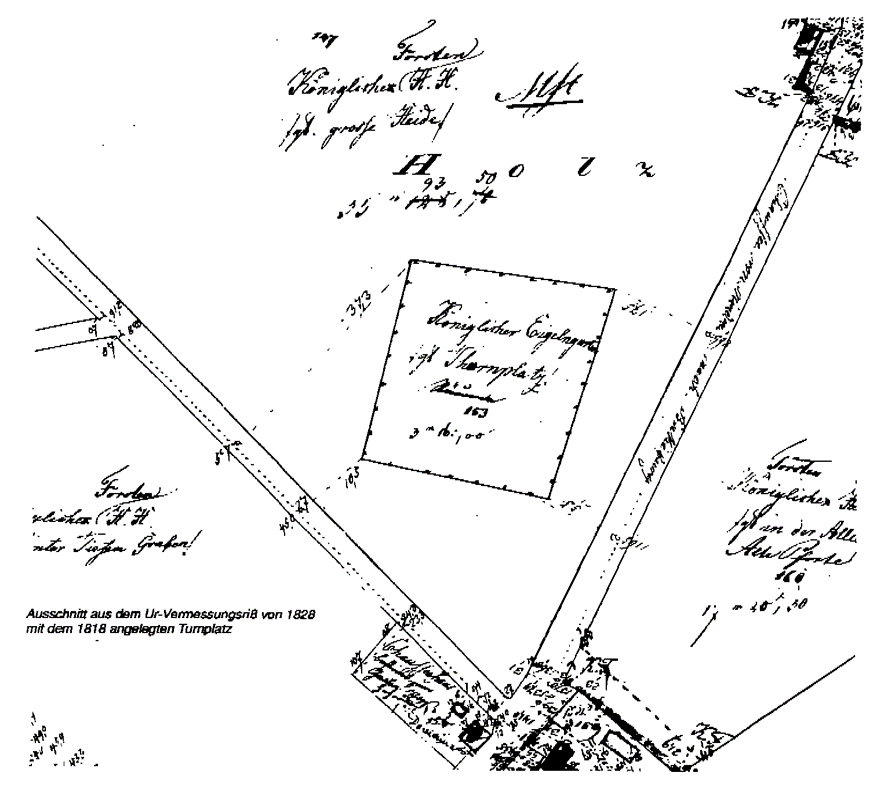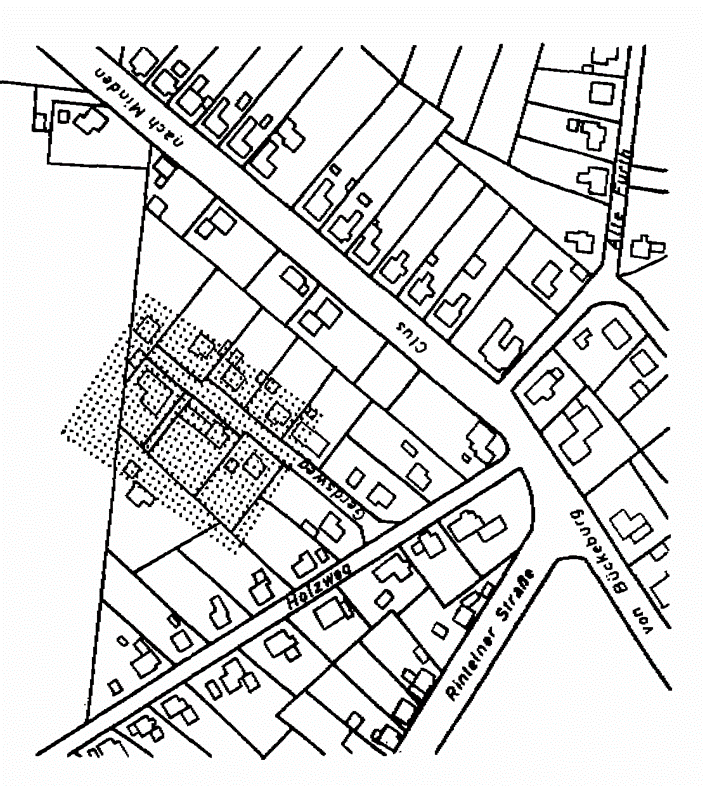Deutsche Version: Der älteste Turnplatz Westfalens im „Meißner Holze“ an der Preußischen Kluß in Minden
The first gymnastics field in Westphaliain the "Meißner Holze" at the Preussischen Kluß in Minden The following statements are based on research by Dr. Karl Schodrok The founding of the first gymnastics field on Westphalian soil in 1818 at the Preussische Kluß in Meißner Holze was inextricably linked to Prussian military and educational policies.
The aim was to improve the physical condition of young Prussian men.
In Minden, which was at that time the capital of the district, the first gymnastics institute in Westphalia was able to start operations on July 17th, 1818 at the Preussische Kluß in the Meißner Holze. In the opinion of Dr. Faust this was an ideal area for a gymnastics field. As far as the distance of the gymnastics from the city of Minden was concerned, it also fulfilled excellent conditions, because according to Dr Faust`s own experience, it took 45 minutes to walk from Minden to the forest. Here we can see he is adhering to the ideas of Jahn, for whom walking was held to be an extremely useful exercise for children after the age of eight.

In a letter dated July 6th, 1818, the gymnastics master Steineke from Bückeburg was officially entrusted by the Minden district government with the running of the gymnastics field in Meißener Holze.
The field was 320 feet long (about 100 m) and 240 feet wide (about 75 m), roughly the size of a football pitch. The total production costs for earthworks and for the entire facility with gymnastics equipment amounted to 250 Reichsthaler, 14 Groschen and 3 Pfennigs.
A look at the list of names of the Minden gymnastics students is revealing: It was a gymnastics community made up entirely of students, the 47 members all came from the seven city schools. Six students were under 10 years old, 40 students were 11 to 15 years old and only one was 18 years old. Listed according to criteria such as origin, income, education and the profession of the father, the following picture emerges:
16 children belonged to families of senior administrative officials,
15 children belonged to middle-class families,
10 children came from the officer ranks, including three children from noble families.
Only six craftsmen's children were given a free pass and allowed to participate. The statistics show that children from the lower social classes whose fathers were for example day labourers, handymen or farm workers were denied access to the gym. The Prussian government came to suspect that the gymnastics circles were hotbeds of political unrest an could lead to possible coup attempts. This led Friedrich Wilhelm II in 1820 to order that the gymnastics fields of Prussia be closed for good.

This map shows today's housing in the Clus/Holzweg/Gerdsweg area.Back arround 1800, large forested areas stretched north and south of the Clus.Only two residential buildings existed at that time: the Siekmann house (today Clus 107) and the former Chausseehaus (corner of Clus/Holzweg/Rintelner Straße).The location of the gymnastics field is documented here in the illustration by a grid of dots.
